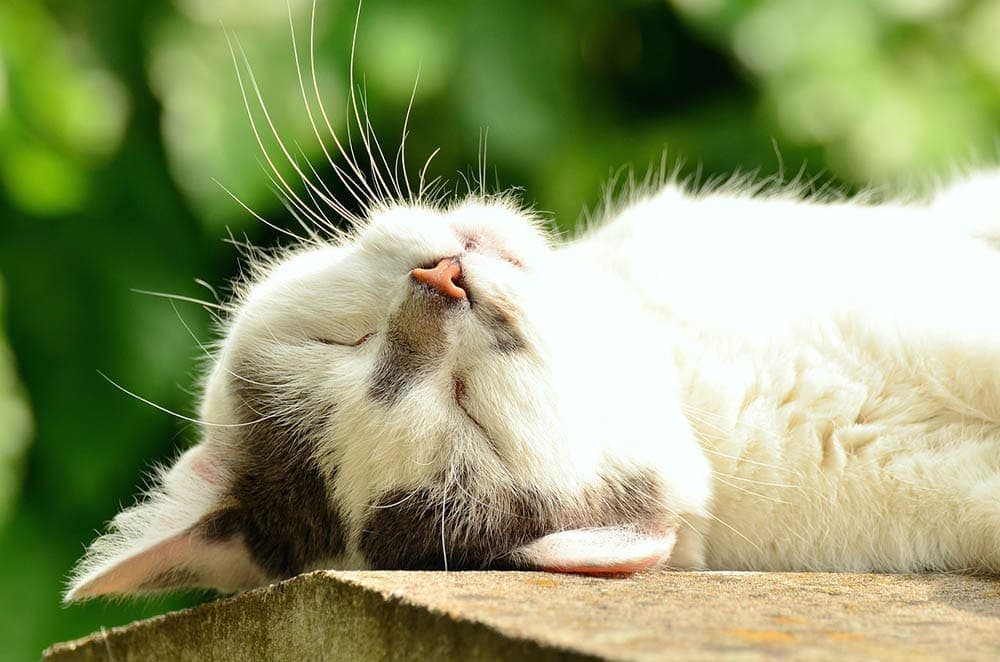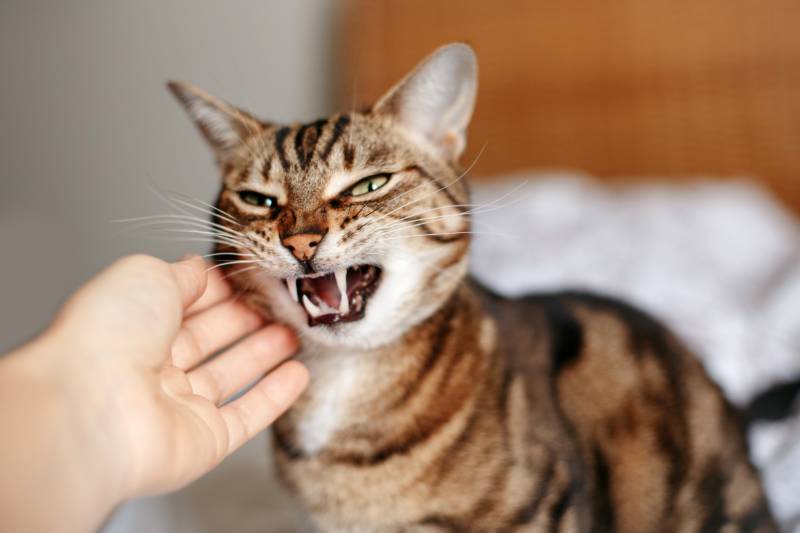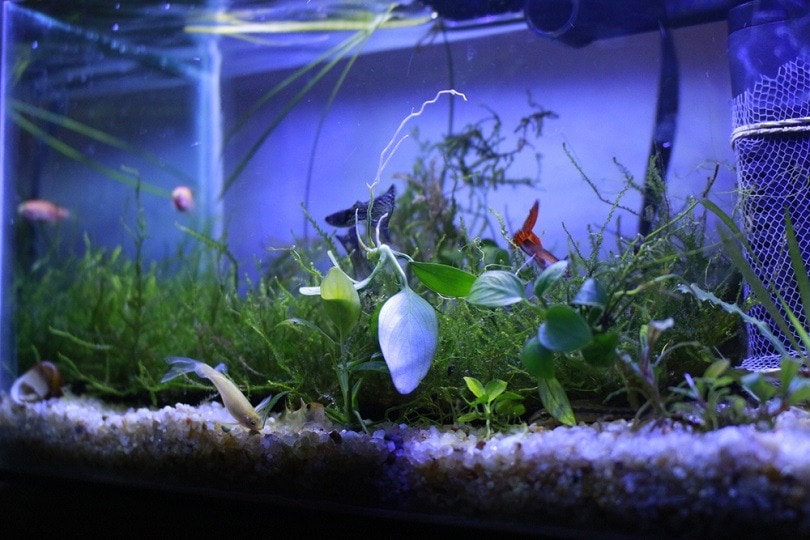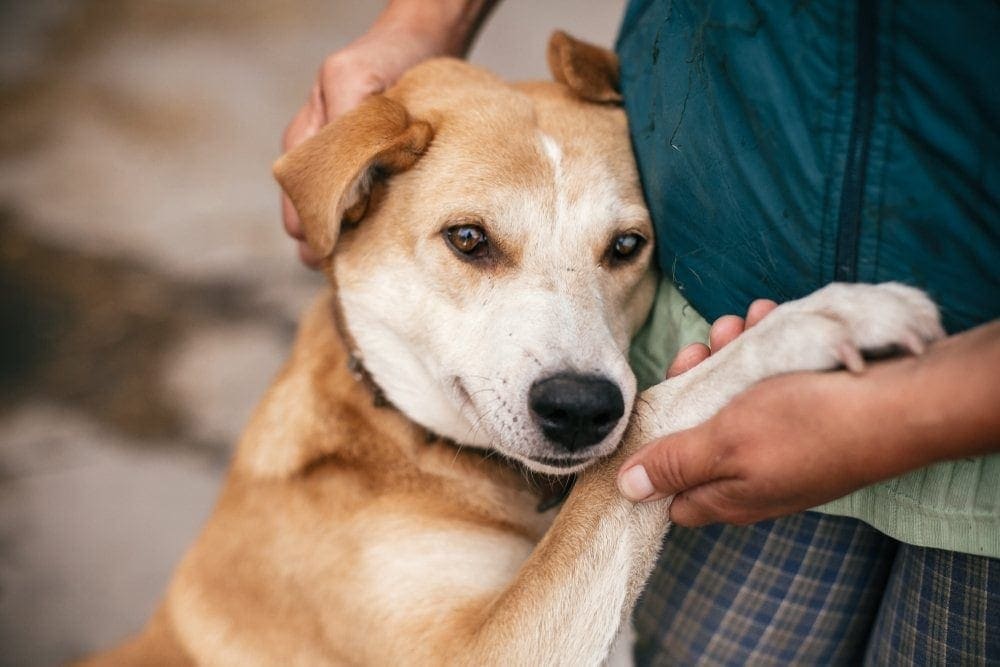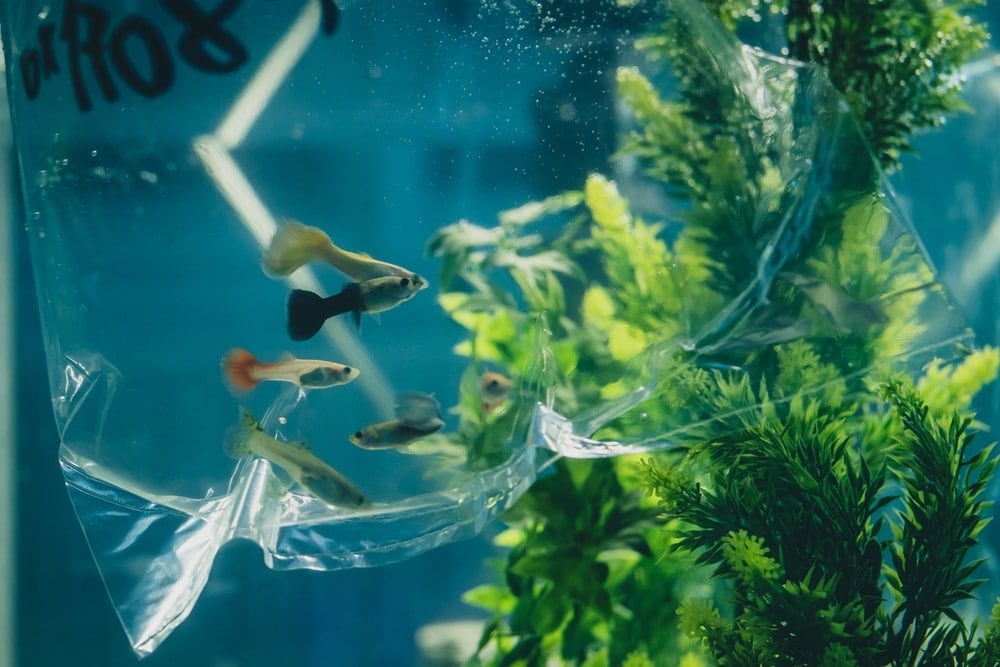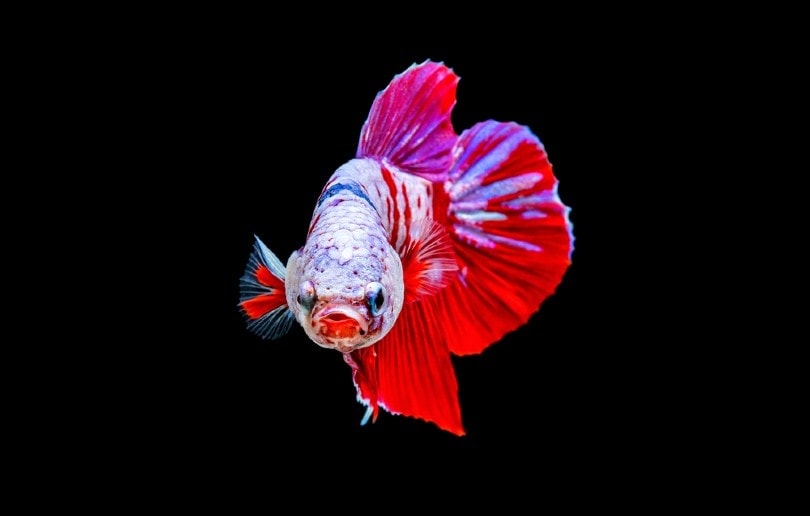Do Cats Hibernate? Sleeping Habits Explained
By Lorre Luther
Updated on
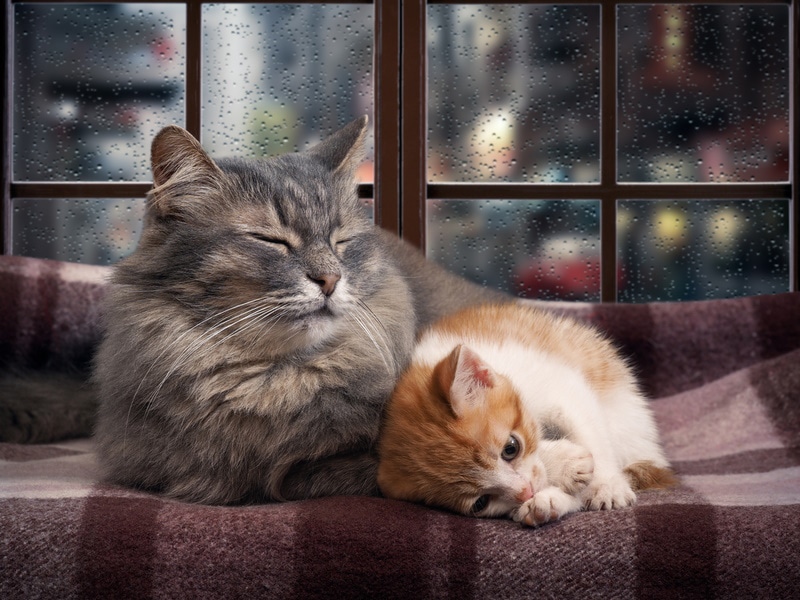
If you live with a feline companion, you may have noticed them snoozing more during the winter and wondered if cats typically hibernate. Hibernation is essentially a form of torpor. Torpor occurs when animals slow their hearts, breathing, and metabolism to conserve energy.
Animals like bears and hedgehogs that hibernate during the winter experience physiological changes that allow them to spend long periods hidden away and inactive. Cats don’t hibernate in the technical sense, but some sleep more when it’s cold or rainy.
How Much Time Do Cats Spend Sleeping?
Cats spend much of their time sleeping, and the average adult cat can spend between 12 and 16 hours zonked out during a 24-hour period. However, much of that time is spent enjoying short naps, during which cats generally remain somewhat alert. It can sometimes seem as if cats are always sleeping since they’re active around dusk and in the early morning hours when their activity can easily go unobserved.
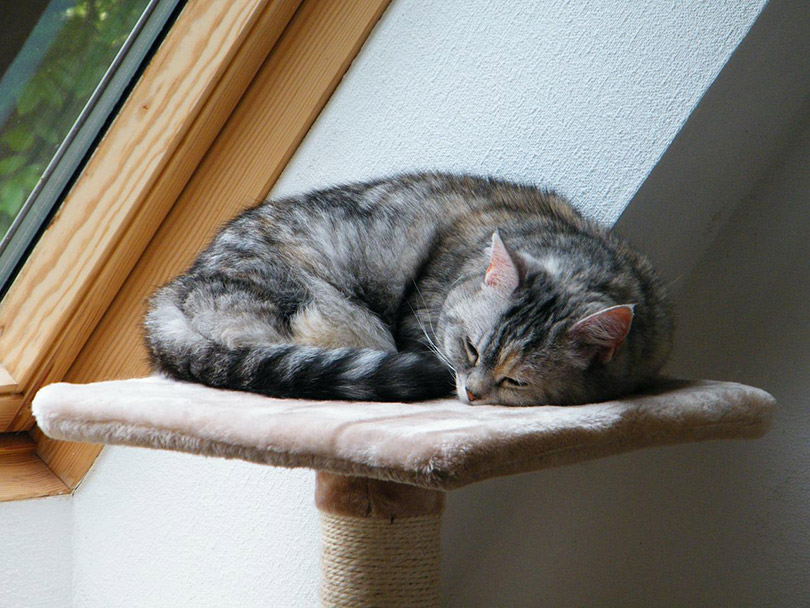
Why Do Cats Sleep So Much?
Cats are predators that rely on stealth and sudden bursts of energy to catch scurrying critters like mice. All the running, jumping, and pouncing cats normally do in the wild require lots of energy, leading them to engage in energy conservation (otherwise known as napping).
Cats in the wild have similar sleeping habits; African lions spend large amounts of time resting and sleeping. Kittens and older cats need more sleep, and cats sometimes start napping more when stressed, bored, or not feeling well. Health conditions such as kidney disease and hypothyroidism can also prompt some to spend more time sleeping.
What is Hibernation?
Hibernation is a form of torpor in which animals essentially slow down their metabolisms to allow them to survive winters when food is scarce. Instead of spending energy trying to find food that’s not abundant during cold months, hibernating species drastically decrease their energy levels and hang out until spring arrives, bringing more opportunities to eat. They use fat consumed before winter to survive the period of hibernation.
Hibernation allows animals to conserve energy, but it also makes them incredibly easy for predators to catch if their resting spots are found, but some information suggests they may be less likely to be discovered as they’re not scurrying about and making noise. Hibernating animals can also die from exposure to extreme weather, and those who don’t gain enough fat beforehand sometimes don’t survive the winter. Most don’t stay knocked out for the entire period, and most wake up occasionally.
Some animals in hot climates do the same thing when it becomes extremely hot, or water sources become scarce. Others regularly enter torpor for short periods to conserve energy. Obligate hibernators have winter rests regardless of the weather conditions.
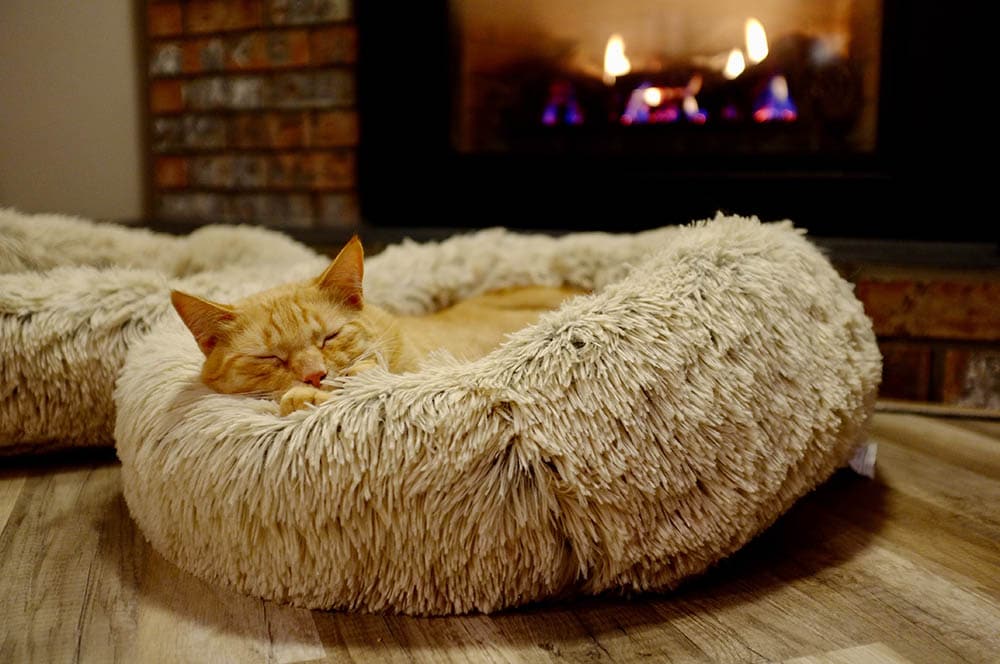
What Animals Typically Hibernate?
Hibernation is common in small mammals such as chipmunks, hedgehogs, and European hamsters. Small mammals generally have more difficulty staying warm when temperatures drop than larger ones. Some types of bats, reptiles, and insects also hunker down for deep sleep.
Bears
Bears can stay immobile for several months during periods of winter torpor, which is much longer than traditional hibernators usually go without a bit of activity. Bears use the urea in their waste instead of waking to go to the bathroom to build protein to maintain their muscles. Some even emerge from hibernation with more lean muscle than at the beginning of the winter, but most end up dropping body weight.
Bears wake from hibernation when disturbed relatively easily, which may have to do with the fact that they maintain relatively high body temperatures during torpor. Bears’ bones even stay strong despite extremely long periods of inactivity. There’s a bit of controversy over whether bears should be considered hibernators or super hibernators.

North American Wood Frogs
North American wood frogs gradually increase the amount of glucose in their blood until they become virtually freeze-proof. They spend the winter frozen in leafy nests built near ponds. It takes them about half a day to dethaw!
Cod, Lemurs, and Hummingbirds
Antarctic cod can lower their metabolism during hibernation to a mere fraction of what it is during the rest of the year. Dwarf lemurs in Madagascar can go several minutes without breathing when hibernating, and their brains become close to inactive. Hummingbirds can lower their body temperatures and enter torpor to survive in close-to-freezing temperatures.
Dormice
Dormice may be some of the most famous members of the club. The tiny rodents can double their weight before hibernation, which can last several months! Dormice were an Ancient Roman delicacy, and they were fattened in special jars and served stuffed with pork.

Conclusion
Cats don’t hibernate or enter a bear-like torpor over the winter, but some like to sleep more on cold, rainy days, which is quite an accomplishment since healthy cats can sleep for most of the day, even when the sun is shining. Several animals hibernate, including chipmunks, hedgehogs, bears, and some types of hamsters.
Hibernation is essentially an energy-saving strategy. Instead of spending energy looking for food they’re not likely to find or struggling to stay warm in challenging conditions, hibernators slow down their metabolism, hide out somewhere safe, and wait for the conditions to change.
Featured Image Credit: Irina Kozorog, Shutterstock



